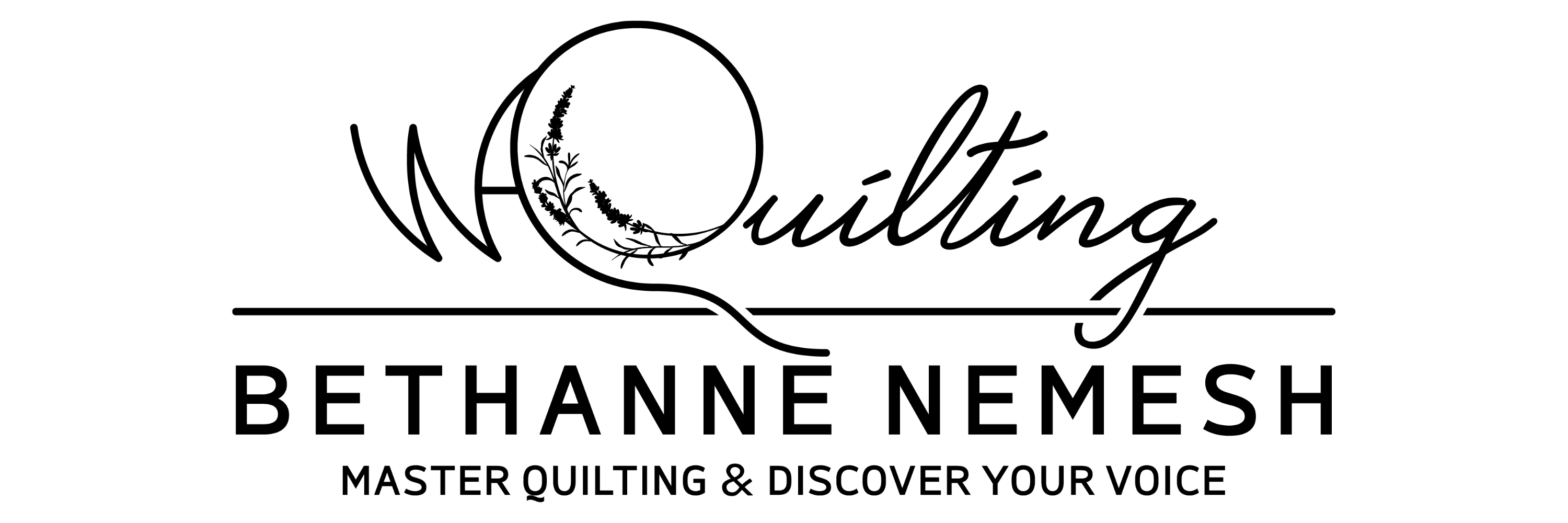Has your quilting ever done a disappearing act? Working hard on quilting a quilt, and then not seeing the quilting, or having thread just lay on the top of a quilt like dead spaghetti, despite great tension is incredibly disappointing and leaves us flat.

Choosing the right batting for your quilt is critical…and stressful…it isn’t like you can change your mind.
Several factors influence which batting to pick. So, I want to highlight a few positives and negatives and give you my quick reasoning behind my choices.
But another big factor is the finished flexibility of a quiltAdding backfill will 100% ALWAYS stiffen a quilt.
If you want a soft snuggle quilt, stick to open quilting plans


100% cotton is “classic” but for machine quilting, a big disappointment. Cotton is actually dense, and while it comes in a variety thicknesses, it does not have loft, so machine quilted stitches tend to “lay” on the surface and do not nestle down into the quilt.Nevertheless it is a good choice for heirloom looking quilts after washing, giving that bit of “pucker”.
So, my advice if you desire the qualities of cotton, is to go for a cotton blend. In my studio I use Hobbs 80/20 (cotton/poly) natural off the bolt. The bolt seems fluffier than the packaged versions. The 20% polyester provides the aeration and puff that is missing from 100% cotton.
Wool is a fantastic choice for amazing loft WITH superior flexibility. A 100% wool batting quilt can actually tolerate high density quilting and still remain reasonably flexible. I have used several brands of wool, and find them generally fairly equal, however I prefer to use ones with a “resin” binding, which is a ultra fine bonding spray to prevent migration or bearding.
Did you know there is a 80/20 cotton/wool option? Yes…and I love it. It is even fluffier than the 80/20 cotton.
Another positive of a wool…no “memory”, so it tends not to get hard creases (as easily).

Wait a minute Bethanne. What about the Polyester puff battings? True. They exist and they also have low “memory”. A low loft poly is similar in appearance, but better puff than a 100% cotton, the quilting WILL nest better. A high loft poly is similar in appearance and loft to a wool. However, I tend to avoid polyester for the following reasons:
*They are made from petroleum mining
*They melt in a fire
*The quilt top and backing slip easily on the batting, making it more challenging to keep seams aligned and require substantial basting
*When quilting pantographs, the top can easily crawl to the side when floating tops on a longarm, because the batting is “slick”
*Thread tension can be a hassle, particularly with “slick” threads, and they don’t seem to like to stay properly centered in the sandwich. If you find this, make one thread (bobbin) a “rough” thread and the top a “slick” thread.
Still, the Polyester is a good choice if you have a lot of allergies. Some cotton batting can retain a pesticide smell, particularly cheap brands sold at discount stores. If it smells when you open it of chemicals, it will continue to de-gas and give you headaches for a long time. Also, some people have wool allergies. From an environmental impact study, the manufacture of polyester and cotton are actually about equally scored across many factors like chemicals, water and land use as well as manufacturing pollutants, so that is not a huge factor, in my opinion.
The bottom line? There are lots of other batting choices, but here are my personal habits and why:
*Every day projects: 80/20 blend of cotton/poly or cotton/wool
*High density quilting with areas of open, like feathers, that I want great pop with dense backfill, but not a stiff project: 100% wool
*Show quilting where I want a stiff wall quilt WITH excellent puff that hangs rigidly for best presentation: 80/20 base layer with wool on top. The base layer forces the puff of wool to rise to the top to its maximum potential.
Clearly I did not address silk, or bamboo battings. Both of these are awesome for several reasons…but neither have good “loft”, so were not addressed in this newsletter.
I hope you enjoyed this quick why and how of batting in my studio!
~Bethanne
My Newsletter is the single best way to be sure to get my educational content. Be sure to click the link in the footer of this page to get updates, sales, and first chance at class enrollment!

